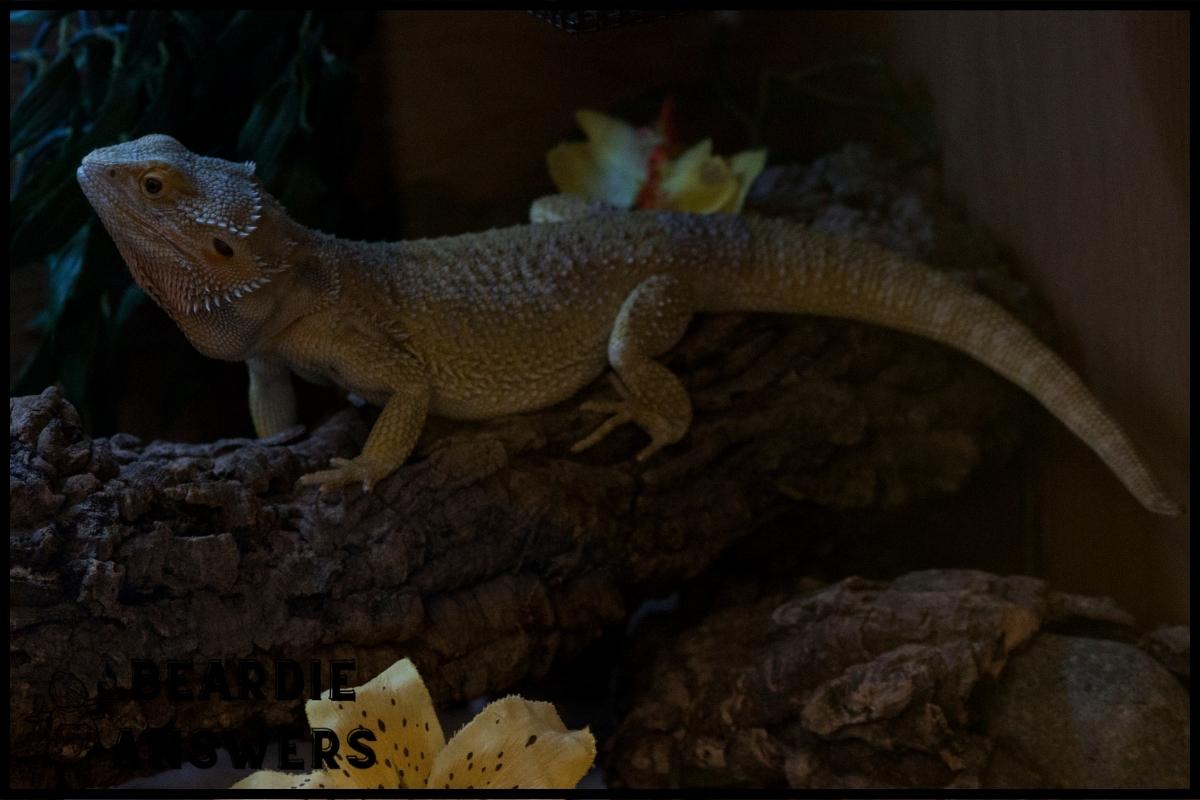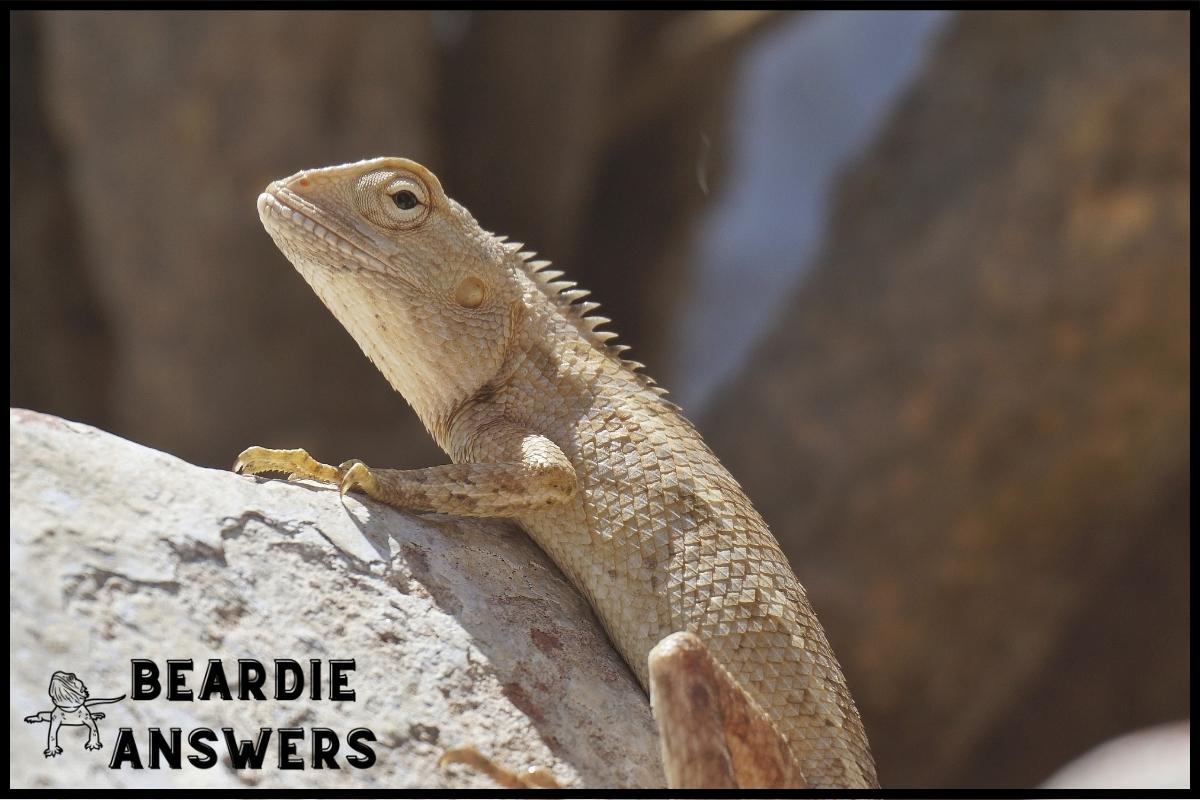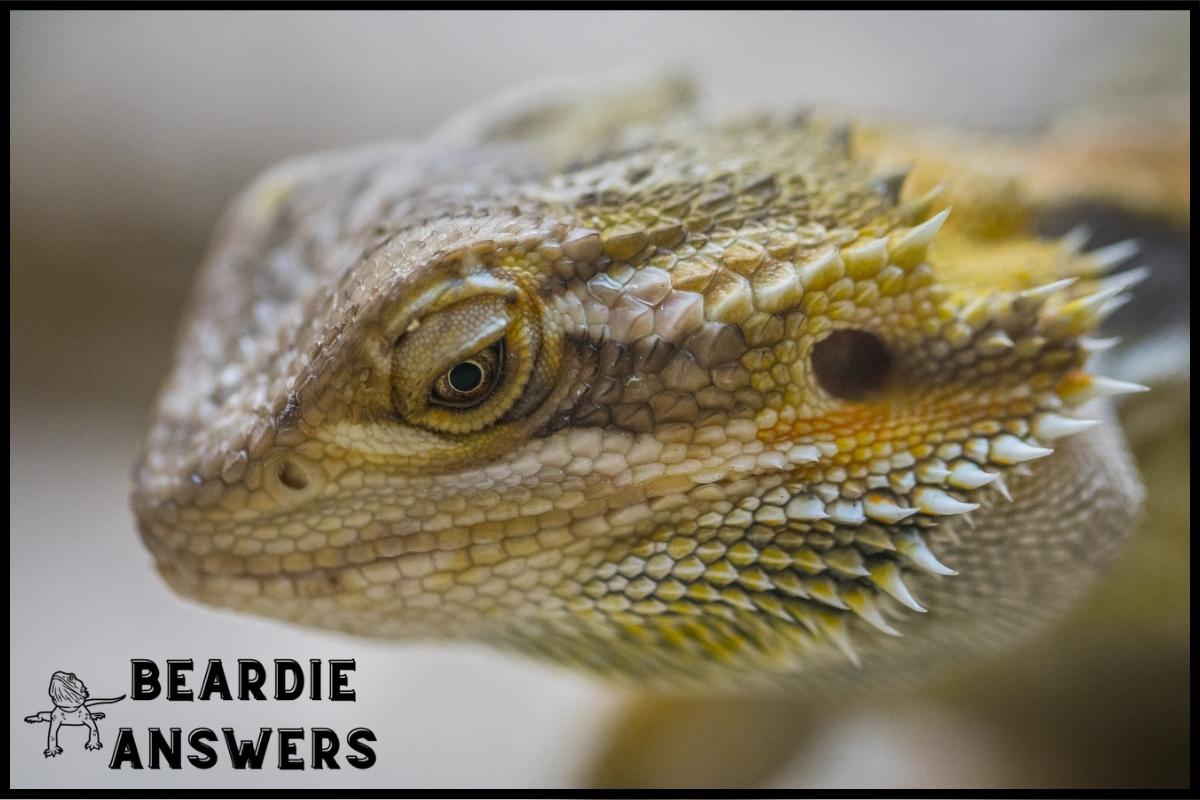Bearded dragons can take up to 18 months to reach their full size, depending on their gender, genetics, and diet. Owners must provide a suitable habitat with proper lighting, temperature, and humidity levels to promote healthy growth and development.
What You'll Learn
Factors That Affect Growth Rate
The growth rate of bearded dragons is largely determined by their dietary needs and habitat requirements. Proper nutrition is essential for the lizard to reach its full size, as a lack of nutrients can stunt growth or lead to health issues. To ensure that your pet gets all of the necessary vitamins and minerals, you should feed them a variety of proteins, fruits, vegetables, and insects.
Additionally, providing an environment with enough space for the dragon to move around freely will help it grow at a healthy pace. Furthermore, setting up appropriate humidity levels in the enclosure is also important as it helps keep the animal hydrated and comfortable.
Heat and sunlight are also major factors when it comes to bearded dragon development. The lizards require temperatures ranging from 75-90 °F (24-32°C) throughout the day along with 10-12 hours of UVB light exposure per day for optimal growth. Although some owners may opt for artificial lighting systems instead, natural sunlight is still preferred by most experts as it offers more beneficial wavelengths than those generated through LED lights.
Providing these necessary conditions allows bearded dragons to thrive while also reaching their full adult size within 18 months or less. As such, ensuring that they have access to adequate food sources, suitable habitats, and sufficient heat/light sources is key when caring for one of these reptiles.
Heat And Sunlight Requirements
Bearded dragons need plenty of heat and sunlight to stay healthy. They require a basking spot with a temperature between 95-110 degrees Fahrenheit and light that is bright enough for them to bask in without getting burned. This can be achieved through the use of fluorescent bulbs, ceramic heating elements, or incandescent lights. UVB lighting should also be provided in order to help promote proper dieting habits as well as assist their bodies in synthesizing vitamin D3 which helps absorb calcium from food sources.
It’s important to provide your bearded dragon with 12-14 hours of daylight followed by 10-12 hours of night time darkness each day. Make sure to keep an eye on temperatures at all times since too much heat could cause dehydration or overheating while not enough warmth will leave them feeling sluggish and lethargic. For safety purposes, it’s always best to invest in a thermometer so you know exactly where your pet stands regarding its body temperature.
Providing the right amount of sun exposure along with appropriate temperatures will help ensure your bearded dragon grows into a strong, healthy adult reptile.
Moving forward, exercise and enrichment are essential components when striving towards the ultimate goal: keeping your beardie happy and content for years to come!
Exercise And Enrichment
Having discussed the heat and sunlight requirements of bearded dragons, it is important to also understand their exercise and enrichment needs.
Bearded dragons are curious animals that need plenty of stimulation. This can be provided through a variety of toys such as branches or other objects they can climb on and explore. They should also have an appropriate habitat setup with enough space for them to move around in; this should include vertical structures such as rocks or climbing walls as well as horizontal surfaces like sand to dig in.
Additionally, dietary needs must be met in order for your dragon to remain healthy: most bearded dragons require a diet rich in protein from foods like crickets, worms, leafy greens, and vegetables.
Enrichment activities not only provide mental stimulation but help keep your pet active by encouraging movement. Dragons will often enjoy chasing after insects if food items are used during playtime; however, supervision is required so that no harm comes to either party. A good routine is key when it comes to keeping these reptiles happy and healthy; regular handling sessions combined with interactive games such as hide-and-seek or search-and-find tasks helps maintain physical condition while providing much needed mental stimulation.
It’s essential that you address any health concerns right away since even slight changes in behavior may indicate something isn’t quite right–growth spurts and stages may affect how regularly your dragon eats or how frequently they engage in activity, which could mean they’re uncomfortable or ill. Monitoring behaviors carefully will ensure early detection of any potential issues so that prompt treatment can occur when necessary. Moving forward we’ll discuss growth spurts and stages of development more thoroughly…
Growth Spurts And Stages
Growth spurts and stages of a bearded dragons’ life can seem like an endless journey, with no end in sight. In reality, the process is quite remarkable, as these creatures grow from tiny hatchlings to full-sized adults at lightning speed. While 18 months may seem long for us humans, it truly is nothing compared to the amount of growth that happens within this time frame!
Bearded dragon babies are between 3-4 inches when they first hatch and will triple their size by 4 months old. At around 8 months, they will reach adulthood and become sexually mature.
During each stage of development, dietary needs must be taken into consideration – calcium supplementation should be added if needed while also making sure the meal plan consists of plenty of protein sources such as crickets or worms. It is also important to note that juvenile dragons need more space than adults do; increasing habitat size accordingly will ensure optimal growth throughout every stage.
To sum up, proper care plays a major role in optimizing growth rates during all phases of a bearded dragon’s lifetime. Making sure diet and housing requirements are met goes beyond just creating a comfortable environment; it ensures these animals stay healthy and thrive through each developmental milestone along their incredible journey towards maturity.
Proper Care For Optimal Growth
Proper care is essential for optimal growth of bearded dragons. Diet is a key component, as they require an appropriate balance of insects, vegetables and fruits to remain healthy. A good general rule when feeding these reptiles is to provide them with food items that are no larger than the space between their eyes. It’s also important to keep in mind that young dragons need more frequent feedings than adults.
The size of the enclosure must be taken into consideration as well. Bearded dragons should have plenty of room to move around and explore their environment, so it’s best to choose one that’s large enough for your dragon to grow comfortably without feeling cramped or restricted.
Additionally, you’ll want to make sure that you include adequate lighting sources such as UVB bulbs which will help support proper bone development and overall health.
Cleaning out the terrarium regularly is also a necessity for keeping your bearded dragon safe from potential parasites and bacteria buildup; this includes removing old substrate, providing fresh water on a daily basis, and wiping down surfaces with reptile-safe disinfectants every 2 weeks or so.
By following these tips and giving your pet the right amount of attention and affection, they’ll reach full size in 18 months or less!
Conclusion
Overall, proper care is essential for bearded dragons to reach their full growth potential. With the right environment and nutrition, they can grow healthy and strong.
I think of them as little warriors in a battle against time; pushing through life’s challenges with determination and courage until they are fully grown.
Taking care of these creatures is an act of love that will be rewarded when you see your dragon reaching its full size.

Hi! My name is Bryan, I am the “one behind the words” here are BeardieAnswers.com. I believe that providing quality care and nutrition is the best way to ensure the health of your pet. Every beardie is special and deserves the best care and attention. If you have questions about your bearded dragon, please don’t hesitate to ask! View My Full Author Page




